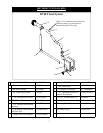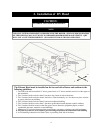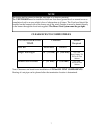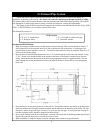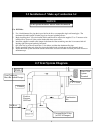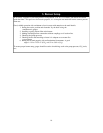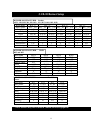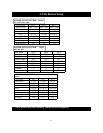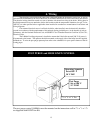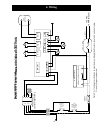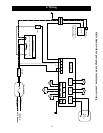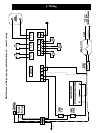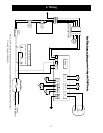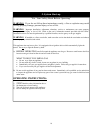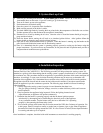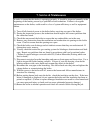
5) Smell for gas, including near the floor. If you smell gas, STOP! Follow “B” in the safety
information above on this label. If you don’t smell gas, go to the next step.
6) Turn on all electric power to the appliance.
7) Set thermostat to the desired setting.
8) Once the system is lit, inspect the entire installation.
9) Make sure the pressure in the boiler is stable.
10) Test both 4006A high limits by lowering their set points below the temperature of the boiler one at a time.
If either aquastat fails to shut the burner down replace it immediately.
11) Simulate a loss of fuel by shutting the oil valve. Once the valve is closed the burner should go into post –
purge and then lockout.
12) Reset the burner before turning the oil back on to simulate ignition failure. After ignition failure the
burner should go through a purge period and then lookout.
13) Open the oil valve and return the burner to operation. While the burner is running, trip the breaker at the
panel, that should disable the burner and all other heating controls.
14) Once it is determined that the system is operating properly, proceed to tuning up the burner using the
proper instruments. If you do not have any instruments, do not place this unit in operation until you have a
competent burner technician tune up the burner.
5. System Start-up Cont.
19
Recommended procedures for safety inspection of an appliance should be in accordance with the
National Fuel Gas Code, ANSI Z223.1. The following procedure will help evaluate the venting system. It is
intended as a guide to aid in determining that the venting system is properly installed and is in a safe condition
for continuous use. This procedure should be recognized as a generalized procedure which cannot anticipate all
situations. Accordingly, in some cases, deviation from this procedure may be necessary to determine safe
operation of the equipment. If it is determined that a condition exists which could result in unsafe operation,
the appliance should be shut off and the owner advised of the unsafe condition. Corrections must be made
before the appliance is put into continuous operation. The following steps should be followed in making a
safety inspection.
1. Visually inspect the venting system for proper size and determine that there is no
flue gas spillage, blockage, restriction, leakage, corrosion, or other deficiency which could cause an
unsafe operation.
2. Place in operation the appliance being inspected. Follow the lighting instructions and
adjust thermostat so appliance will operate continuously.
3. Determine that the burner is operating properly and that the burner ignition operates
satisfactorily by interrupting and re-establishing the electrical power of the appliance
in any convenient manner. Test the burner safety device to determine if it is operating
properly by disconnecting the flame safety circuit.
4. Test for smoke spillage at the burner inlet air location around the VRV after 5 minutes of operation. Use
a draft gauge, flame of a match or candle, or smoke from a cigarette, cigar or pipe. Shut off appliance
thermostat and check for spillage around the VRV. If a flow reversal is noticed, house depressurization
is occurring and make up air is required.
Once installation is complete, check the boiler with instruments to ensure that it is working properly.
6. Installation Inspection



